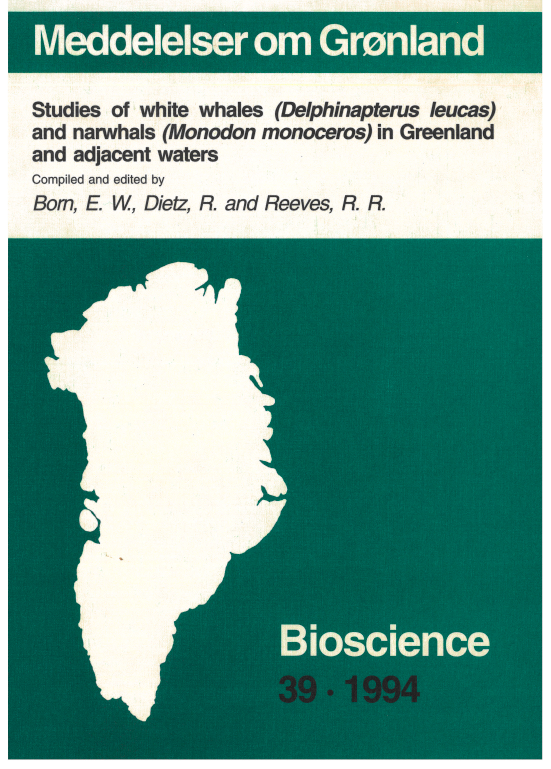Prehistoric exploitation of white whales (Delphinapterus leucas) and narwhals (Monodon monoceros) in the eastern Canadian Arctic
DOI:
https://doi.org/10.7146/mogbiosci.v39.142538Abstract
Zooarchaeological data relating to prehistoric Paleoeskimo (ca. 4000-1000 B.P.) and Neoeskimo (ca. 1000 B.P. to historic times) use of white whales (Delphinapterus leucos) and narwhals (Monodon monoceros) in the eastern Canadian Arctic are reviewed. Remains of these two species are extremely rare in Paleoeskimo sites, probably because of the lack of a sophisticated whale-hunting technology.
While white whale and narwhal remains are more common in Neoeskimo sites, they nevertheless make up relatively insignificant portions of the total fauna] assemblages. Since Neoeskimos possessed a sophisticated whaling technology, the problem becomes one of explaining the general paucity of such remains. Four potential factors are addressed: a) taphonomy, b) processing and transport, c) lack of appropriate archaeological data and d) lack of these two species in the diet of Inuit during prehistoric and early historic times.

Downloads
Published
Issue
Section
License
Coypyright by the authors and the Commision for Scientific Research in Greenland / Danish Polar Center/Museum Tusculanum Press as indicated in the individual volumes. No parts of the publications may be reproduced in any form without the written permission by the copyright owners.

